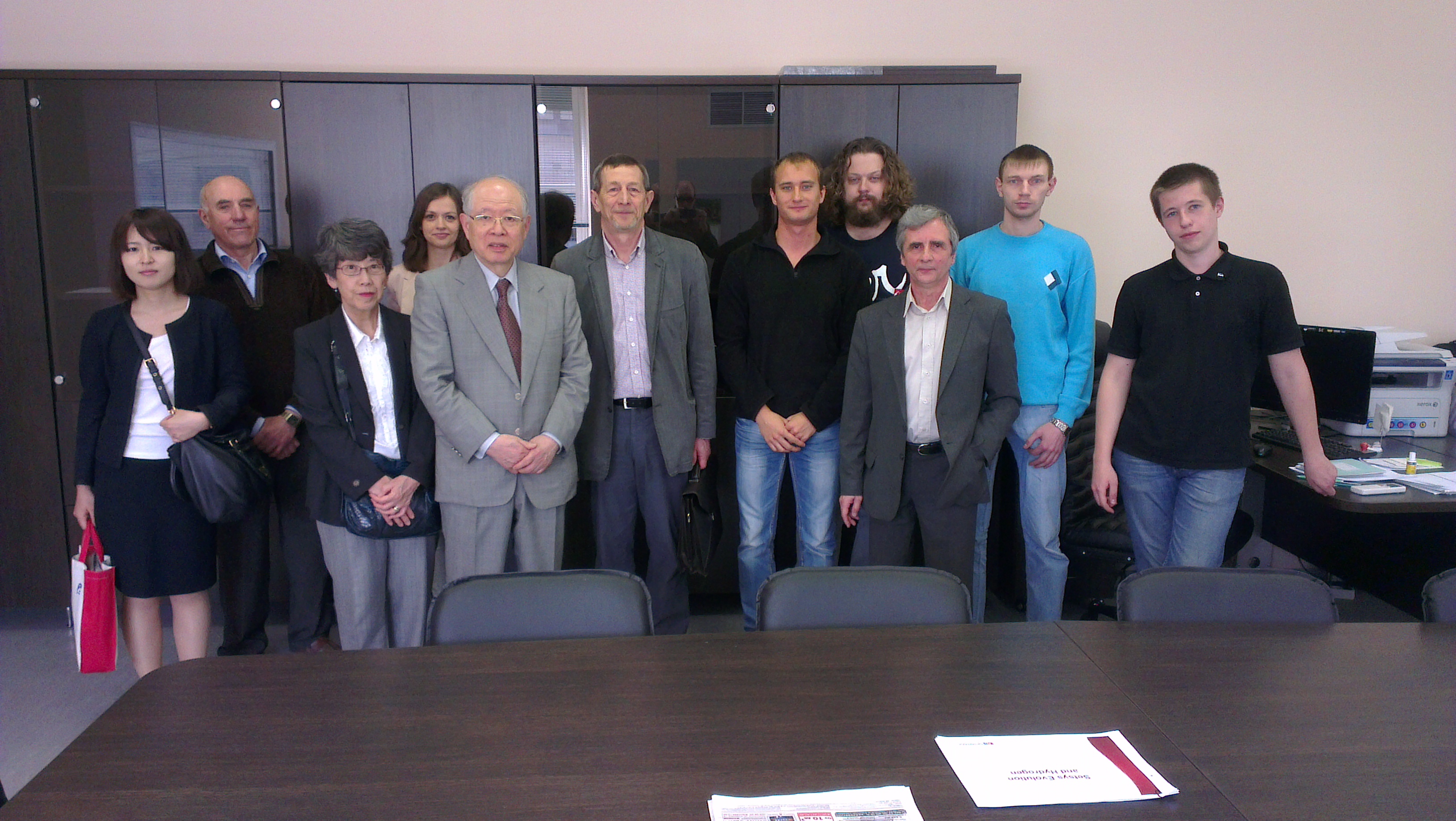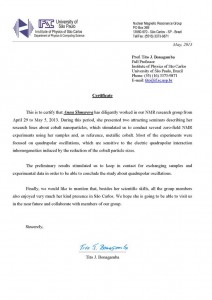Today Ryōji Noyori, the Nobel Prize winner in Chemistry in 2001, visited our Center. The day before he became Honorary Doctor at St. Petersburg State University.

Visiting Nobel Laureate in Chemistry (2001) Ryoji Noer - introduction to the technological capabilities of the center, research equipment.

Y. Rozhkova, A. A. Gurinov, P. M. Tolstoy, G. S. Denisov, I. G. Shenderovich und V. I. Korotkov
«Acridine – a Promising Fluorescence Probe of Non-Covalent Molecular Interactions»
Zeitschrift für Physikalische Chemie, 2013, accepted
Abstract
Fluorescence and absorption spectral parameters of acridine have been studied in solution at room temperature in the presence of different proton donors aiming to inspect whether or not acridine can be used as a spectroscopic probe suitable to measure the geometry of hydrogen bonds under different conditions. It has been shown that the most appropriate spectral parameter is the position of fluorescence maximum that changes heavily upon a contraction of the N…H distance. Presumably, also the intensity of the maximum strongly depends on the hydrogen bond geometry. These two parameters can be used to establish two independent, mutually complementary correlations connecting the spectral manifestations and the geometry of hydrogen bond.
Anna Shmyreva has completed the training in the University of São Paulo, Brazil, and got the certificate.
- 13.05.2013 Z. Phys. Chem. 2013
- 06.05.2013 Resource center’s specialists participated in the exhibition "The results of the Federal Target Program "Research and development on priority directions of scientific-technological complex of the Russian Federation for 2007-2013
- 26.04.2013 A new article in the JACS is accepted
- 25.04.2013 Excursion in the Center
- 24.04.2013 Resource center’s specialists participated in the XI scientific seminar "Modern scientific and analytical equipment", Moscow.



